Polar Front position from XBT and AMSR-E
Polar Front position is defined as the poleward location of SST gradient above 1.5C/latitude
with SST below 10C.
1. Polar Front from XBT
Figure 1: XBT SST (red, right axis) and
SST gradient (black, left axis). Stars are the Polar Front postions: black star is the subsurface
PF, blue is surface PF determined from the poleward location of SST gradient above 1.5C/latitude,
green star is the corrected surface PF based on SST at the front, red star is the mean PF from
Orsi at the corresponding longitude. The figures is for Drake Passage.
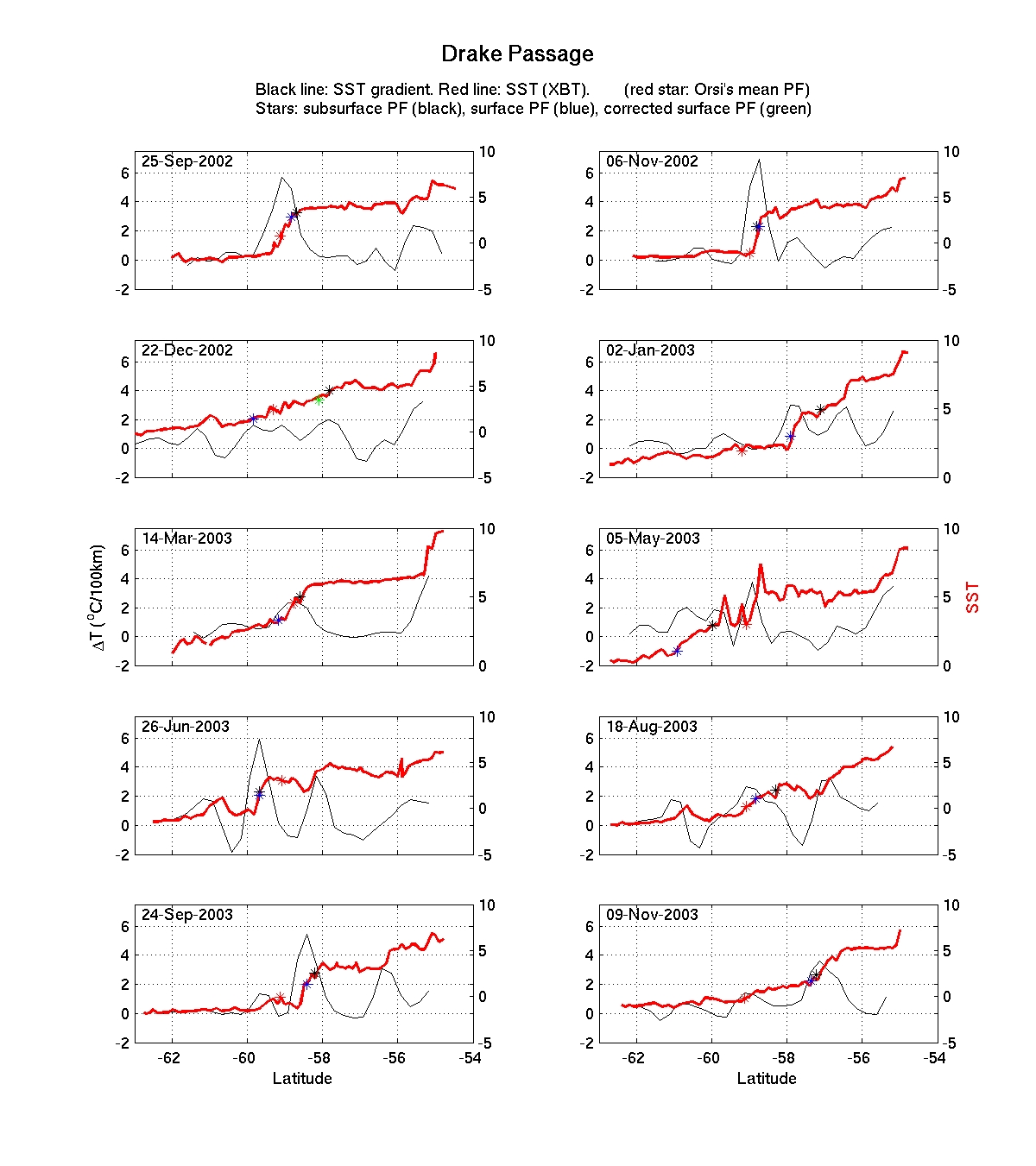
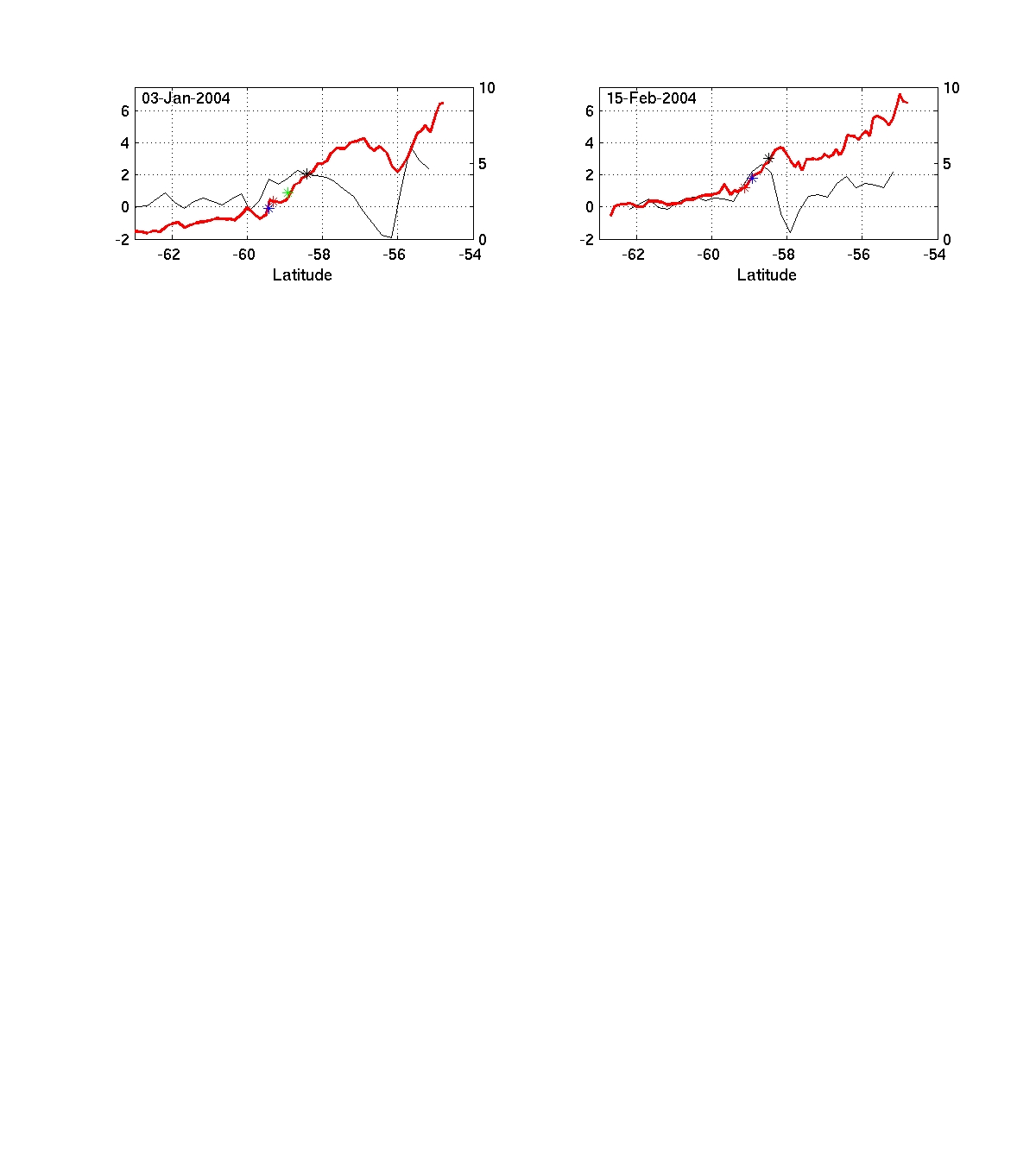
Figure 2: Same as Fig. 1, but for south
of Australia.
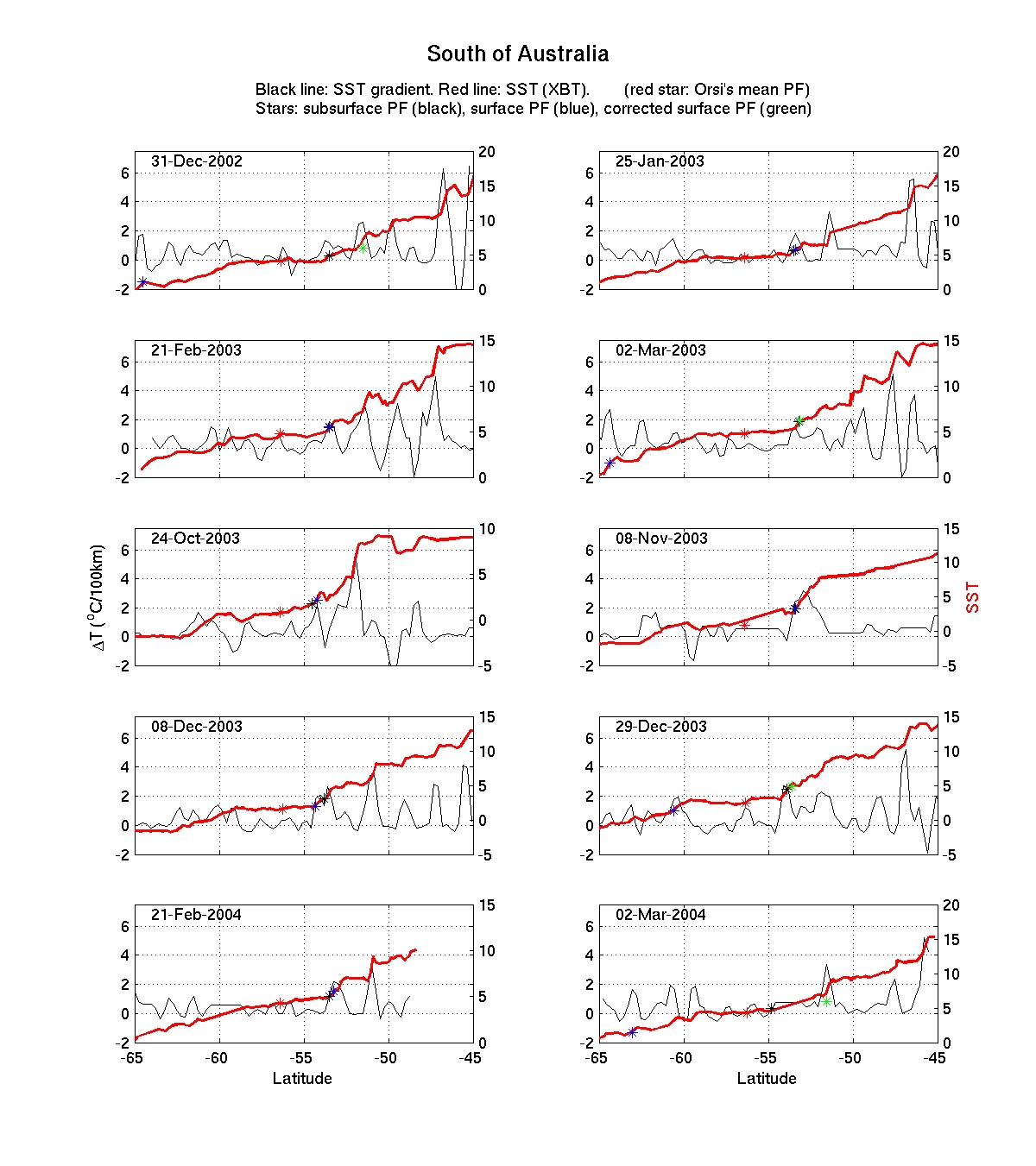
2. Polar Front position from AMSR-E
Bascially the PF is determined from two step: (1) poleward location of SST gradient above 1.5C/latitude
with SST below 10C, (2) trace the PF from Drake Passage eastward and westward to get a more consistent PF path.
The Drake Passage is chosen for the start point because there is less discrepancy in the PF path
Figure 3: Mean PF path from different studies.
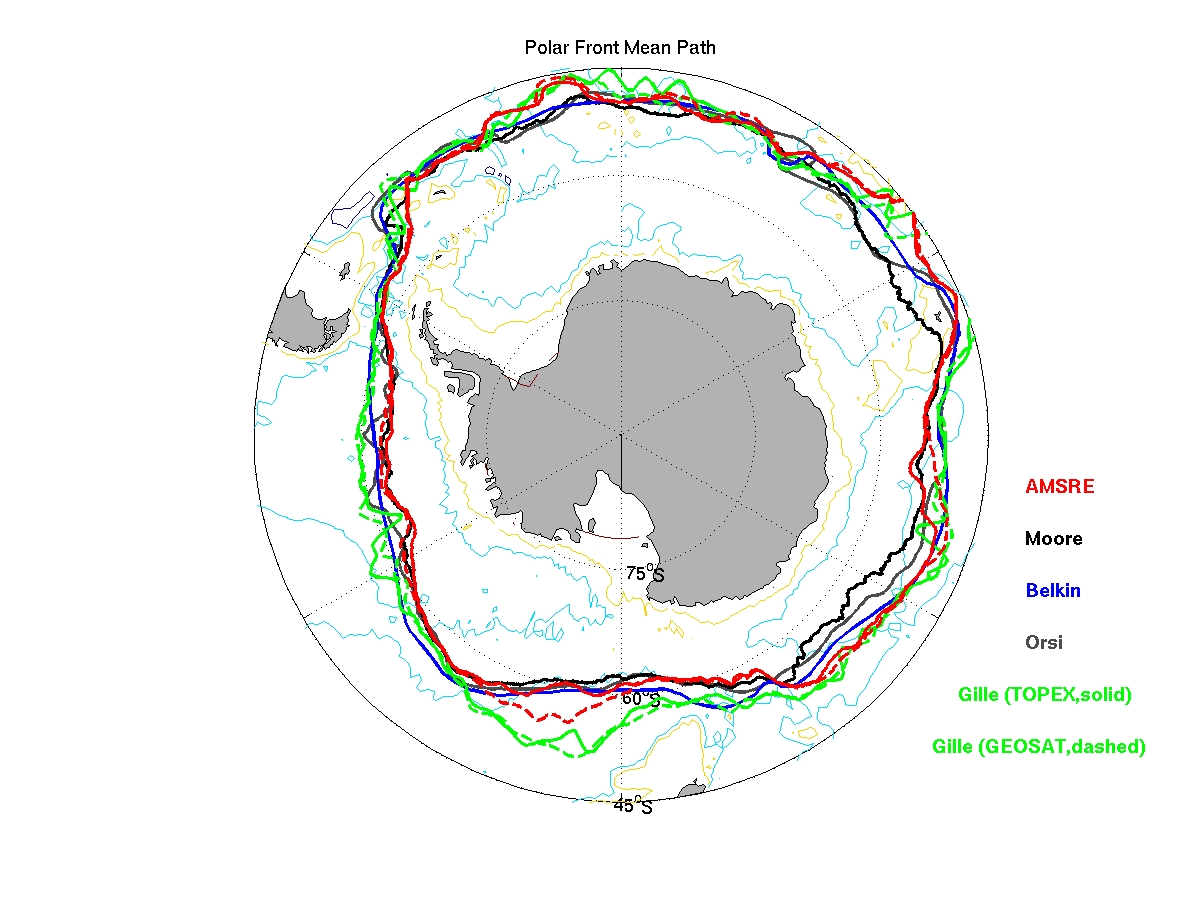
Figure 4: Two examples of the PF path
and SST gradient. The two colors of the image represent the SST gradient larger than 1.5C/latitude
and 1C/latitude. The black line is from SST gradient larger than 1.5C/latitude and the red line is
from a relative low limit for SST gradient (changing seasonally). The green line is an isotherm (based
on the averaged SST along PF).
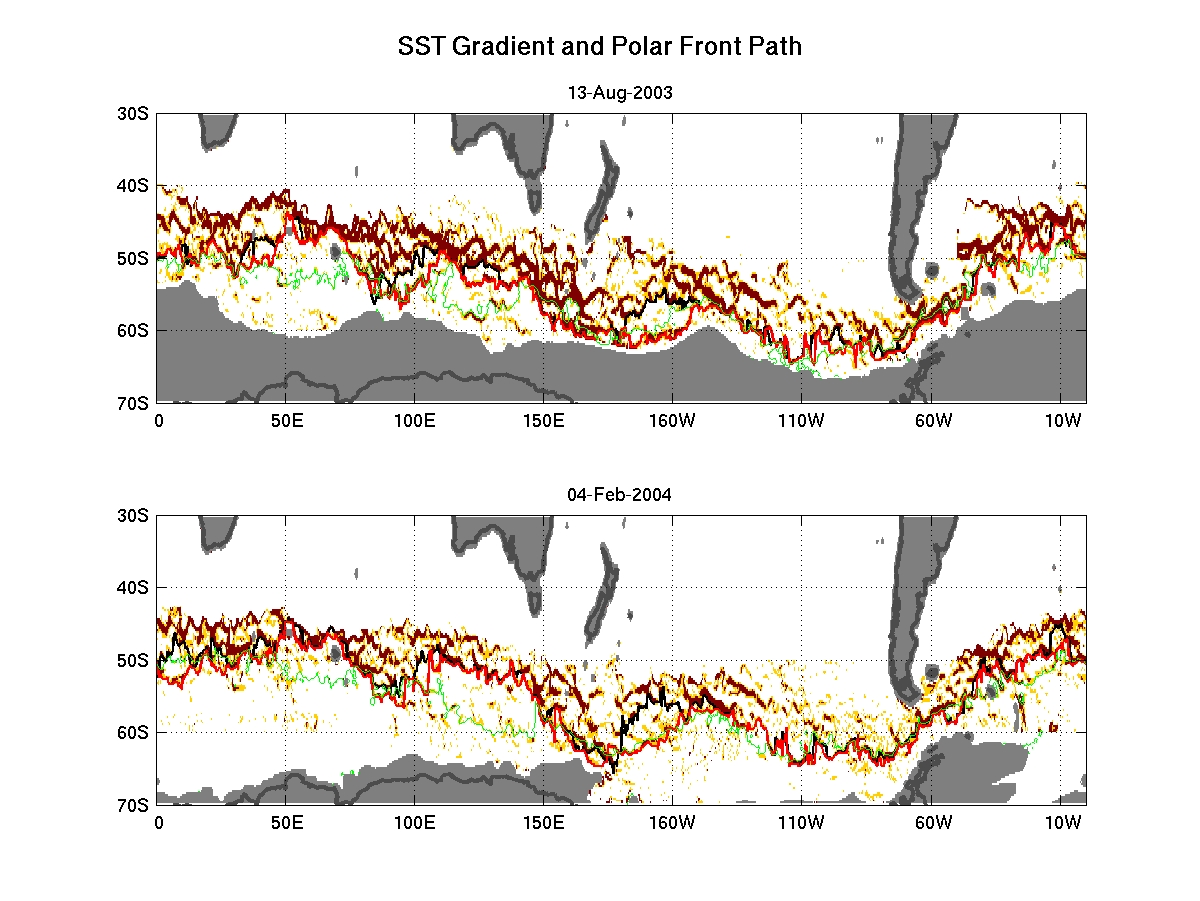
Figure 5: Zonally averaged anomalies of
(a) the PF path, and (b) SST at the PF.
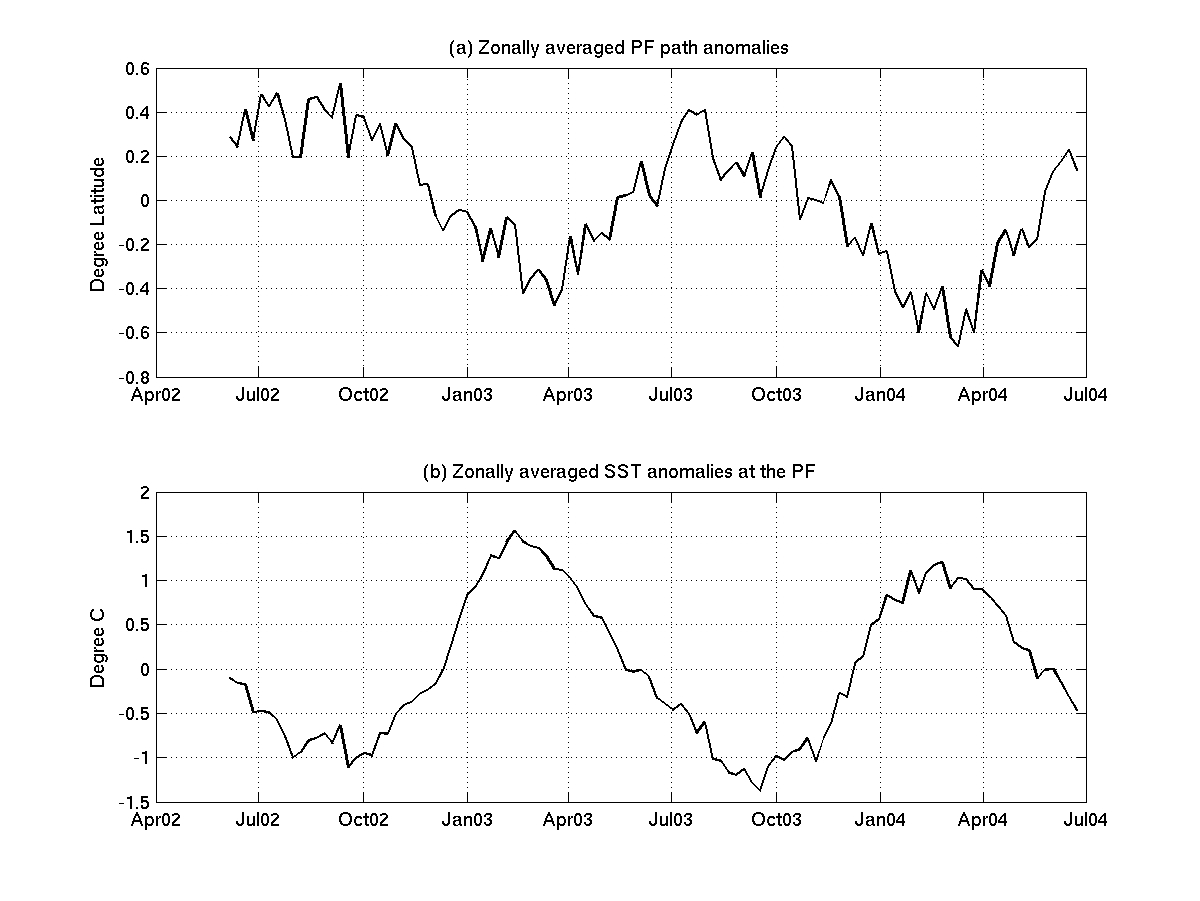
Figure 6: (a) Standard deviation of the PF path.
(b) temporal mean SST at the PF.
